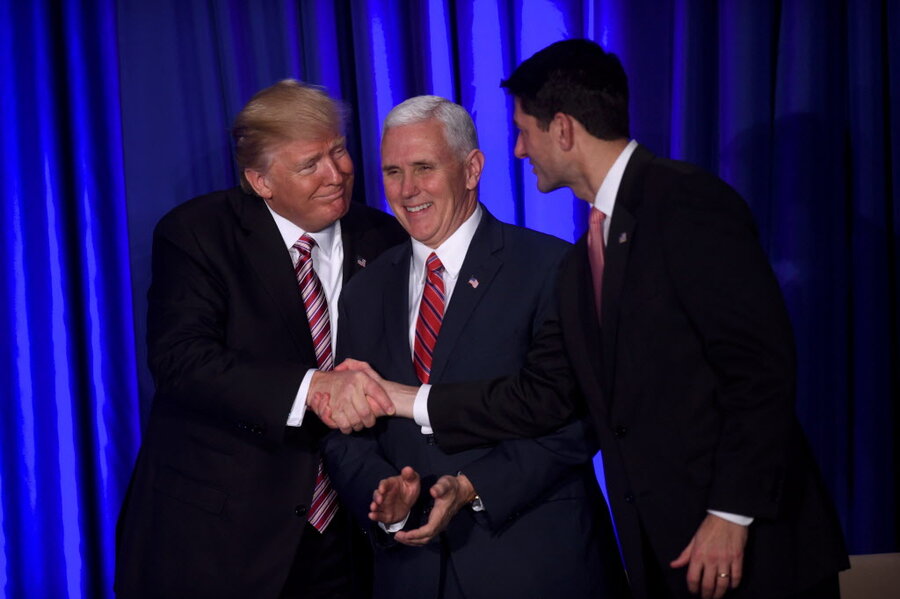Economists estimate the long-term consequences of big tax cuts
Loading...
President Trump and Congress are likely to consider an historically broad range of tax and spending changes over the next year. But they’ll be doing so in the face of unprecedented long-term fiscal challenges, according to new estimates by my Tax Policy Center colleague Bill Gale and University of California at Berkeley economist Alan Auerbach.
While Trump and many congressional Republicans are proposing massive tax cuts, Gale and Auerbach project the US will need a combination of large tax increases and spending cuts to help bring the federal budget back to a sustainable path.
Before beginning the Great Fiscal Policy Debate of 2017, it helps to know where we are starting from, and what would happen if government stayed on its present course. The Congressional Budget Office measures that baseline by assuming that current law remains in place for decades to come. Gale and Auerbach project the fiscal outlook through a different lens, what they call a “business-as-usual” baseline.
They assume that temporary tax cuts continue indefinitely and that all discretionary spending will increase with the rate of inflation, despite the budget caps that Congress first enacted in 2011 but delayed in 2013 and 2015. They also assume that spending for Medicare and Social Security continues at promised levels even after their trust funds run out of money. They assume the economy continues at close to full-employment for the entire period.
Based on these assumptions, the deficit would more than double from 2.9 percent of Gross Domestic Product to 6.1 percent by 2027. The ratio of debt to GDP, now 77 percent (twice the average of the past half-century) would approach 100 percent in a decade and top 120 percent in two decades.
Bill and Alan project that total federal spending would rise substantially, from 20.7 percent of GDP this year to 24.1 percent in a decade. The average over the past half-century was about 20 percent.
The composition of that spending would change dramatically. Net interest costs would double to 2.9 percent. Even if allowed to increase at the rate of inflation, discretionary spending would fall from 6.3 percent of GDP to 5.8 percent. But spending on mandatory programs such as Medicare and Social Security would rise from 13 percent of GDP today to 15.4 percent in 2027, largely because of the aging of the Baby Boomers.
By contrast, taxes would remain relatedly constant over the next decade, increasing from 17.7 percent to 18 percent. That would be a just bit higher than the 17.4 percent average over the past half-century.The last time the budget was balanced, spending and receipts were about 20 percent of GDP.
And there, of course, lies the problem: If spending rises to 24.1 percent of GDP by 2027 but taxes increase to only 18 percent, that leaves a troubling fiscal gap. In 2027, the annual deficit under their assumptions would nearly triple in nominal terms to $1.7 trillion and more than double as a share of GDP.
That’s the environment in which President Trump has proposed a tax cut that would add $7.2 trillion to the national debt over 10 years, according to Tax Policy Center estimates. The outlook developed by Bill and Alan can provide a road map to help understand the consequences of such a fiscal policy.
This story originally appeared on TaxVox.





